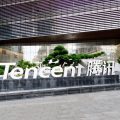Organizations have increasingly turned to containerization to create more scalable, efficient and agile infrastructure. Containerization involves packaging software code with the libraries and dependencies required to run the code. This creates self-contained code that can be run on any infrastructure, such as desktop, on-premises IT or cloud-native.
Containers have grown more important as organizations need portable and resource-efficient technologies, becoming the de facto compute units of modern cloud-native applications. Gartner predicts that 90% of global enterprises will use containerized applications and one in five apps will run in containers by 2026, as CIO reported.
Containers have increased in popularity and adoption ever since the release of Docker in 2013, an open-source platform for building, deploying and managing containerized applications.
How containers work
Containers utilize operating system (OS) virtualization and leverage the OS kernel (e.g. Linux namespaces and cgroups, Windows silos and job objects) to isolate processes and control the amount of CPU, memory and disk that those processes can access.
Containers’ development speed enables organizations to build, deploy and scale new business services quickly. They differ from virtual machines in that they leverage the features and resources of the host OS versus requiring a guest OS in every instance.
They have become more important as organizations embrace modern development techniques such as microservices, serverless and DevOps, all of which utilize regular code deployments in small increments.
Microservices architectures break up an application into small, autonomous services. Containers and microservices are different concepts and can be used separately, although it is common to deploy microservices in a container. Containerization helps DevOps teams avoid the complications that arise when moving software from testing to production.
Why container monitoring is important
Organizations need to monitor the health of their containerized apps and track performance issues, like any other software. Maintaining container visibility and tracking comprehensive container metrics enables organizations to reduce costs and better manage their software lifecycles across use cases.
Container monitoring, a facet of application monitoring and application performance management (APM), provides several benefits to an organization, including the ability to track performance metrics and promote container efficiency, reduce mean time to repair (MTTR) and increase the dependability of workloads. To achieve this, organizations can utilize container monitoring solutions that provide organizations with real-time visibility into container performance. Container monitoring helps achieve observability and ultimately ensure the availability of IT services.
It is imperative to be able to track how the entire application is performing and have visibility into every specific component and layer so that teams have a complete picture of the entire containerized environment.
Six ways organizations set up, monitor and maximize performance and health of containers
1. Define monitoring KPIs
A comprehensive container monitoring strategy requires setting KPIs at the onset to ensure they align with business goals. Organizations might have different needs and different goals regarding their container strategy and must align what they measure with those goals.
There are three key areas to focus on for individual KPIs:
- Performance monitoring: Tracking container performance is important, both at the cluster level and within the container runtime. Organizations should focus on KPIs such as response times and network latency to ensure end users have positive experiences with an organization’s applications and web services.
- Resource utilization monitoring: Containers can require significant resources, so it’s important to monitor how much computing resources each container utilizes by tracking KPIs such as CPU usage, disk space usage and memory utilization. Doing so enables organizations to address potential incidents before they become larger problems, such as adding additional nodes before a container exhausts CPU or memory capacity.
- Security and compliance monitoring: Organizations should prioritize security monitoring in their container environment, with a focus on attempted attacks against areas like container images and authentications. Container monitoring can provide vulnerability scans of container images and runtime environments, user MFA percentages, attempted firewall violations and runtime anomalies, which contribute to KPIs like vulnerability assessment scores, incident response time and compliance status.
2. Identify necessary dependencies and integrations
Container monitoring tools should integrate with open-source containerization tools such as Prometheus, JMX and statsD, so organizations can garner insights into their environments. In addition, container monitoring tools should provide visibility into dependencies like host, OS, Java Virtual Machine (JVM), Cassandra nodes and MySQL. The IBM® Instana® Observability platform uses a dynamic graph to model an organization’s applications to create an understanding of all the physical and logical dependencies of components.
3. Create and customize dashboards
Dashboards are a critical component of infrastructure monitoring and assessing the health of containers; employees need to see what’s happening in their container environment so they can intervene if an issue has occurred.
Modern container monitoring tools create dashboards where DevOps teams can view container data in the aggregate and in individual visualizations that display specific data. Instana provides visibility with context through the dynamic graph and context guide. These features help users view the relationships between applications, diagnose issues and determine their impact.
4. Integrate with container orchestration:
Many organizations use container orchestration, which automates the provisioning, deployment and management of containerized applications, through open-source tools like Kubernetes. Kubernetes containerized environments use automation to perform tasks like deployment, load balancing and scaling without the need for human intervention. However, monitoring remains critical, so that organizations have a view into each Kubernetes cluster. Containers produce significant amounts of performance data that can help improve the orchestration process, and monitoring helps ensure orchestration works as it should.
5. Automate workflows:
Automation is an important component of container monitoring. Setting up specific automated workflows minimizes strain on DevOps teams, helps promote container health and efficiency by minimizing human error and allows the system to intervene quicker than a human could.
6. Produce performance incident notifications:
Anomaly detection capabilities are needed to enable quick diagnosis and resolution of performance incidents within containers. A container monitoring solution must log incidents as they occur, which DevOps teams and site reliability engineers can address individually and engage in troubleshooting or determine if they are part of a problem that requires root cause analysis and a more comprehensive response.
IBM and container monitoring
As organizations increasingly turn to containerization, creating robust and disciplined container monitoring practices will become even more important to ensure uptime, excellent service delivery and enhanced user experience.
In containerized environments, visibility and monitoring are crucial not only for maintaining application health, but also for maximizing agility and efficiency—and thereby obtaining full return on your investment in containerized applications.
Container monitoring with IBM® Instana® Observability addresses these challenges and provides continuous automatic visibility with full context into all technical layers—the hosts, the containers, the middleware and running microservices. Monitoring dashboards provide automatic observability into every container, the full technology stack running inside it and the apps running on top of it.




